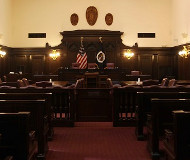4/7/2015
Federal Appeals Court Rules A Lane Change Is Not A TurnFifth Circuit US Court of Appeals rules that motorists do not need to signal 100 feet before changing lanes.

A major drug case hung on a simple question of law, whether a lane change is a "turn" requiring an advance signal of 100 feet. The US Court of Appeals for the Fifth Circuit on Monday ruled that the two are not the same, tossing the government's case against Marco Antonio Alvarado-Zarza because a Texas Highway Patrol officer said Alvarado-Zarza did not signal 100 feet before a turn. The officer's dashcam video showed the driver actually signaled 300 feet before the turn.
The traffic stop happened near the border with Mexico in February 2011 after Alvarado-Zarza activated his signal, moved into the left turn lane and proceeded to make a left-hand turn. Officer Juan Barrientos testified that, although Alvarado-Zarza signaled his left turn, the Texas law requiring drivers to signal at least 100 feet before a turn also applied to lane changes. Not so said the appellate court.
"Section 545.104(b) is unambiguous," Judge Leslie H. Southwick wrote for the three-judge panel. "A lane change, as its name implies, occurs when moving from one lane to another. A 'turn,' on the other hand, involves a change to a vehicle's direction. The terms 'turn' and 'lane change,' therefore, signify distinct actions. Thus, Section 545.104(b), by its plain terms, does not apply to lane changes."
Officer Barrientos was wrong about more than just the law. It turns out, according to the video analysis by expert witness James McKay, that Alvarado-Zarza signaled 100 feet before his lane change, even though he did not have to. The appellate judges slammed the lower court for citing dubious reasons to ignore the analysis.
"The video, though, plainly supported McKay's conclusions regarding the points at which Alvarado-Zarza activated his turn signal and later turned," Judge Southwick wrote. "As a result, the district court clearly erred in determining that McKay's testimony lacked credibility."
The final question before the court was whether the traffic stop could be considered legitimate because Officer Barrientos simply misjudged the distance between the signal and the left-hand turn.
"We have not previously addressed questions about the reasonableness of errors in estimating distances," Judge Southwick wrote. "Taken as a whole, Officer Barrientos' testimony did not provide the sort of specific, articulable facts which would allow a court to determine that he possessed a reasonable suspicion that Alvarado-Zarza had committed a traffic violation. The fact that the actual distance between the signal and the turn was approximately 300 feet, and that Officer Barrientos provided no explanation as to why he might have thought the distance was less than 100 feet, only reinforces this conclusion."
The court threw out the evidence obtained as a result of the illegal traffic stop. A copy of the ruling is available in a 110k PDF file at the source link below.


